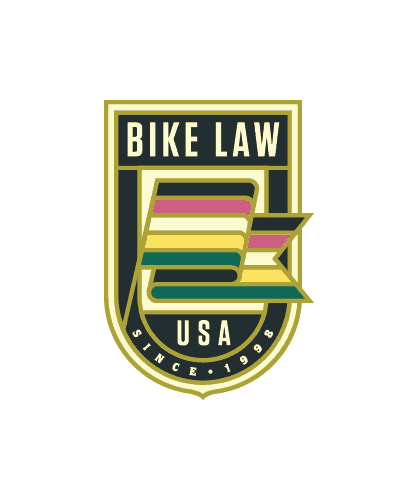It’s important to know your legal rights (and duties) when bicycling in Connecticut. It is especially important after a bicycle accident (we call them bicycle “crashes” and explain why here).
This is a general overview of Connecticut’s bicycle laws. To see them in their completion, please visit Connecticut’s Department of Transportation. Feel free to reach out to Bike Law’s National Director Rachael Maney for further information.
Right to the Road
Bicycles are defined as vehicles and generally have the same rights and responsibilities as motor vehicle drivers.
Where to Ride
- Bicyclists are required to ride as close to the right side of the roadway as practicable when traveling at less than the normal speed of traffic.
- Full lane use is allowed when traveling at the normal speed of traffic or there is no traffic, preparing for a turn, overtaking and passing, avoiding hazards or unsafe conditions, traveling in a lane too narrow to share, and avoiding a mandatory turn lane.
- Bicyclists may, but are not required to, use bike lanes but bicycles cannot use parkways or other limited access state highways unless there are paths specifically provided for bicycles.
- Bicycles are allowed to operate on sidewalks and crosswalks when they yield to the right-of-way of any pedestrian and give an audible signal when passing a pedestrian. Check local ordinances for variations on this rule.
HOW TO RIDE
- Bicyclists may ride no more than two abreast as long as it does not impede the normal flow of traffic.
- Bicyclists are required to slow down and come to a complete stop at stop signs and traffic devices signaling red.
- Bicyclists must signal when turning or coming to a stop.
Bicyclists Overtaking Cars
Bicyclists on roadways must exercise due care when passing a standing vehicle or one proceeding in the same direction.
Cars Overtaking Bicyclists
Motor vehicle drivers are required to pass bicyclists to the left at a safe distance of not less than three (3) feet.
Equipment
- Bicyclists under the age of 15 are required to wear a properly fastened helmet.
- At night, a bicycle must be equipped with a front white light visible from 500 feet away, a rear red reflector visible from 600 feet away, and reflective material on both sides of the bike visible from 600 feet.
- Every bicycle must have brakes which enable the bicyclist to stop within 25 feet at a speed of 10 miles per hour on dry, level, clean pavement.
Prohibitions
- Clinging to motor vehicles while bicycling is not permitted.
- A bicycle may not carry more than the number of persons for which it is designed.
- Bicyclists may not ride into oncoming traffic.
- Bicyclists are required to ride with at least one hand on the handlebars at all times.
- Bicyclists may not use parkways or limited state access highways unless on a bike path.
Alcohol
Connecticut’s DUI statute does apply to bicyclists as bicycles are defined as vehicles.
Vulnerable Road User Law (VRU)
- Bicyclists are defined as Vulnerable Road Users and fine(s) may be imposed on careless motor vehicle drivers who cause the death or serious injury of a pedestrian, bicyclist, or other vulnerable users who used reasonable care.
- No motor vehicle driver may make a right turn if doing so would impede the travel and reasonable safety of a bicyclist. (Right Hook)
